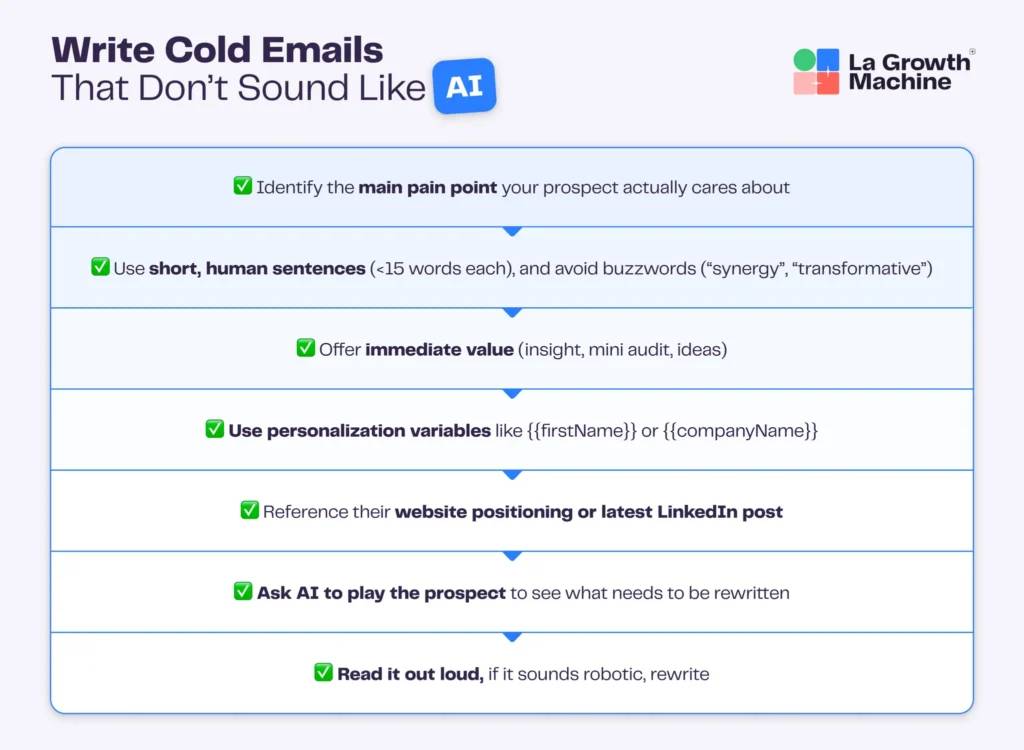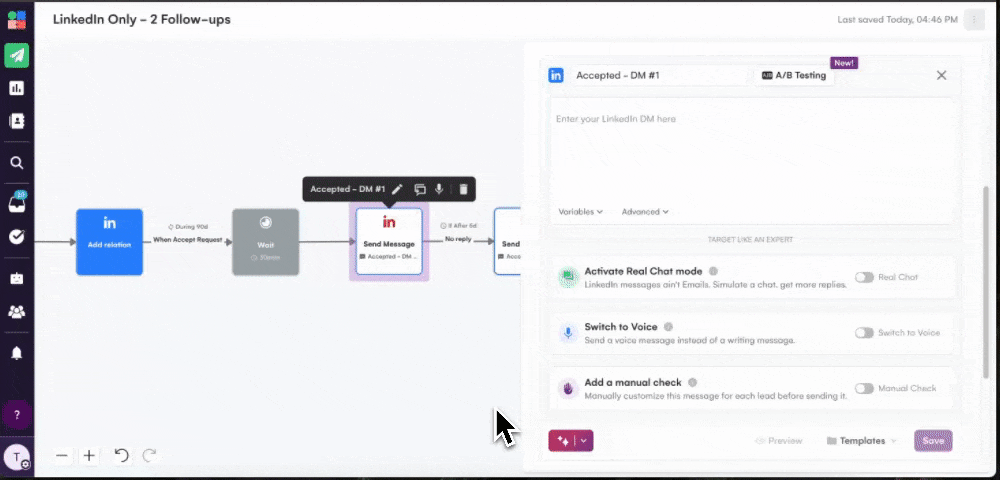This might surprise you: the best AI-powered emails usually don’t come from letting ChatGPT or another model write everything from scratch. According to Matthew Ray Scott (Chief Evangelist at Virtual Sales RX) they come from treating AI like a sparring partner, a smart assistant who helps you sharpen your messaging, stress-test it, and push it until it’s truly compelling.
How it works
- Write a draft by hand.
Start by putting down your rough idea. The point is to get your thoughts out, your positioning, the pain point you want to address, maybe a hook you like.
- Feed AI rich context.
Give it more than just “write me a sales email.” Upload successful past emails, examples that worked, info about your company, the prospect’s business, your objectives, and specific challenges.
- Have AI clean up your V1.
Ask it to rewrite your draft into a clear, concise first version. This gets rid of fluff and polishes your language.
- Switch roles: let AI act as your prospect.
Prompt it: “You’re Emily, an HR manager at a tech company moving to hybrid. How would you respond to this? Be brutally honest.”
This reveals what might land awkward, unclear, or too self-serving.
- Iterate, refine, repeat.
Use the feedback to tighten your message. Then ask AI to analyze again. Try multiple angles: shorter vs. longer, more casual vs. more direct.
- Test small variants.
Adjust CTA friction, clarify benefits, swap out generic words for sharper ones. Each pass should get closer to a message that feels truly personal.
- Pick your winner.
Finally, select the version that’s most likely to earn a quick “Sure, let’s chat.“
Example prompt to feed your LLM
Context:
“You’re a business development lead at a SaaS startup with a project management platform tailored to hybrid teams. You’ve spotted a LinkedIn post from Emily, an HR manager, about her company’s new hybrid policies.”
Goal:
“Start an informal conversation, learn about their challenges, eventually offer a free trial if it’s relevant.”
Main challenge:
“Don’t come off like a typical pushy salesperson.”
Version 1 (before iteration):
Subject: Exploring hybrid work tools for [Company Name]
Hi Emily,
I recently saw your LinkedIn post about your new hybrid work policies. At [MyStartup], we help teams like yours manage projects across remote and onsite environments.
Would you be open to a quick call next week to see if our platform might fit?
Best,
X
Version 2 (after using AI as recipient & refining):
Subject: Quick exchange? Insights on hybrid team management
Hi Emily,
Really appreciated your LinkedIn post on how [Company Name] is evolving hybrid work, inspiring to see how you’re prioritizing both flexibility and employee well-being.
I’m reaching out not to pitch, but because we’ve been working with several tech teams tackling similar hybrid challenges, especially keeping engagement and visibility high for all team members.
Would you be open to a brief, informal call (or even just an email exchange)? I’d love to hear how you’re approaching onboarding and team cohesion, and happy to share a couple of practical tips we’ve seen work elsewhere, no strings attached.
If now’s not ideal, totally fine. Just let me know what suits you best.
Thanks so much,
X
What changed?
- The tone shifted from “asking a favor” to a genuine peer conversation.
- Generic “chat” replaced by more precise language that feels natural for HR.
- CTA softened, giving Emily control over next steps.
- Clear Intention to learn and add value, not just sell.



